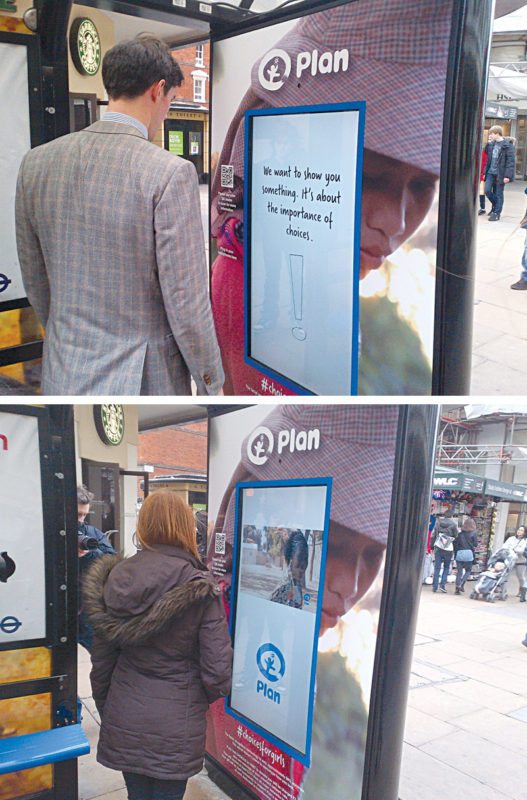According to Market.us, the facial recognition market size is projected to surpass around USD 19.3 billion by 2032 and it is poised to reach a CAGR of 14.6% from 2023 to 2032.
Plan UK, a charity foundation, never thought it would garner so much attention for its campaign ‘Because I Am A Girl.’ The organisation had received several complaints and the campaign was accused of promoting gender bias.
The reason was simple. The organisation had displayed its ad campaign at a bus stand in Oxford Street and the billboard showed the ad film only if the viewer was a girl. However, if a boy was watching the billboard, it would display only the statistics and not the film, thus excluding them of their choice to see the complete ad.
But how did the organisation manage to do that? Well, no points for guessing. The charity foundation tied up with a digital advertising company and deployed facial recognition software in the billboard to identify the gender of the viewer, thus being successful in sending its message across to the viewers.
Global scenario: betting big
According to a report by Transparency Market Research, the facial analytics market is projected to be US$ 2.7 billion by 2022, growing at an estimated ten per cent per annum. While a huge chunk of the pie belongs to the surveillance segment, demand from categories such as retail is also growing.
“Facial recognition is the next biggest trend, one that digital marketers need to pay strong attention to, as it is taking the front stage in marketing trends. Recently, MasterCard announced selfie payments—a payment method using a selfie from a smartphone to pay for a bill. A clear indication that facial recognition will also play a huge part in digital marketing with consumers,” says Ivan Temelkov, chief executive officer and chief human marketer, Razor Sharp Digital.
He adds that in the next five years new facial recognition technology will allow users to personalise their shopping experience. A vast majority of this has to do with authentication and also added security.
For instance, Bank of New Zealand, one of the largest banks in the country, uses EmotionScan, which is a facial recognition technology for reading the emotions of users in a bid to get more people into the banking system.
Videos of the campaign were made—these got nearly 100,000 views. Besides, more than 200,000 people, who accounted for six per cent of all adults, participated in EmotionScan experience. The agency claims that the campaign helped the bank become the second most preferred bank in the country.
Going back to Plan UK’s campaign, the promotion got more than 29,000 viewers during the campaign period, with nearly 2500 viewers each day.

What it means for India
While we can list the success stories of facial recognition technology across the globe, the Indian market tells a different story. On speaking to technology firms that provide such software, most remained clueless about the use of facial recognition software in marketing campaigns.
“How can brands use facial recognition technology in marketing campaigns? It is a pretty expensive technology and is widely used in security systems,” the head of an Indian software company that specialises in facial recognition technology tells EFY on the condition of anonymity.
Thus, brands in India are missing out on the advantages of using this technology when compared to their global counterparts. Besides, like in the case of every new technology, facial recognition software is still expensive and brands are not willing to take the risk. Marketers in India are still not ready to shell out the money for any new technology.
“More than the cost of the technology, brands will experiment if the technology is made available widely and if the benefit is established in the industry,” says Naresh Gupta, managing partner at Bang In The Middle, a New Delhi based creative agency.
To conclude, industries across the globe are betting big on facial recognition technology to play a huge role in daily consumer engagement. What remains to be seen is whether Indian brands will realise its potential and use it to create a place in the minds of their target audience before it becomes a run-of-the-mill technology.
Purba Das, senior business journalist, EFY







